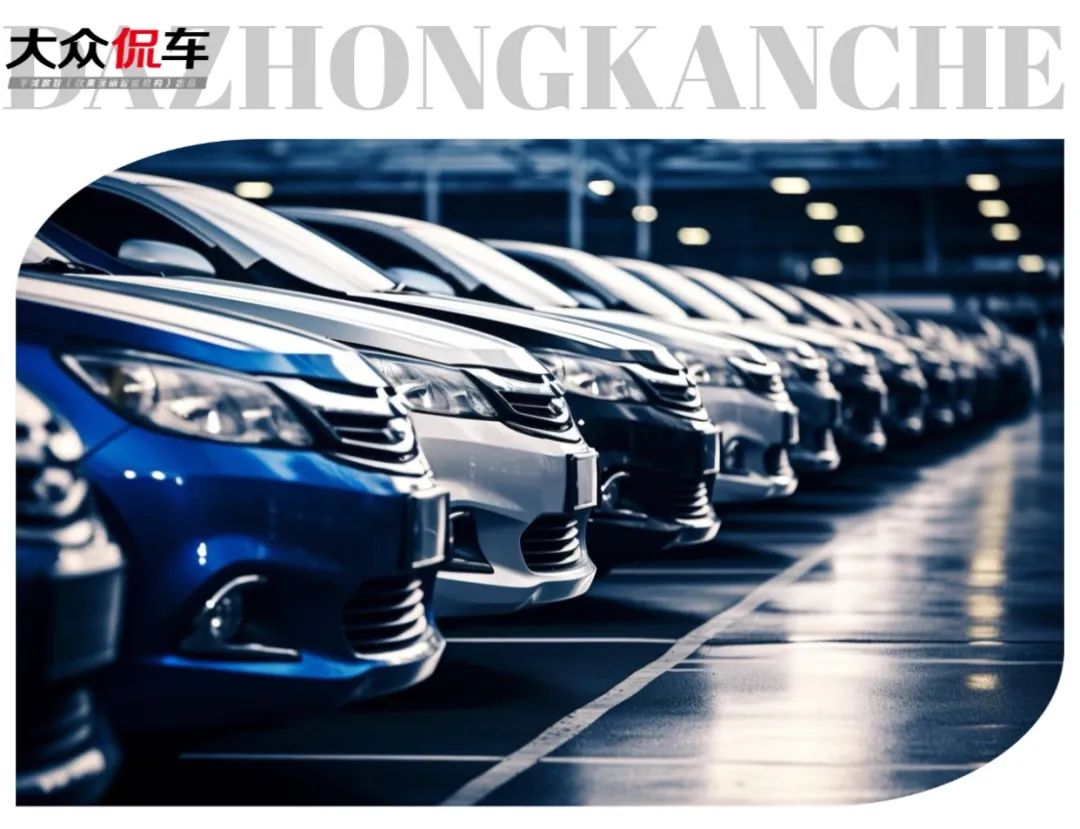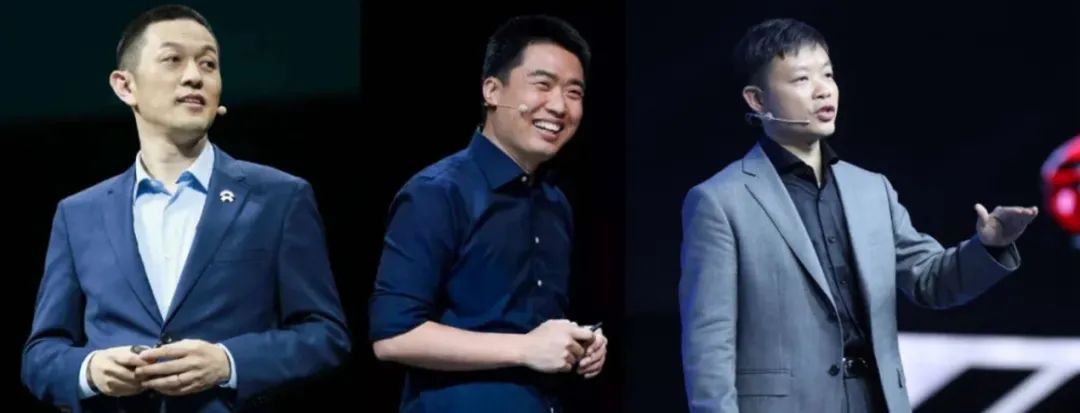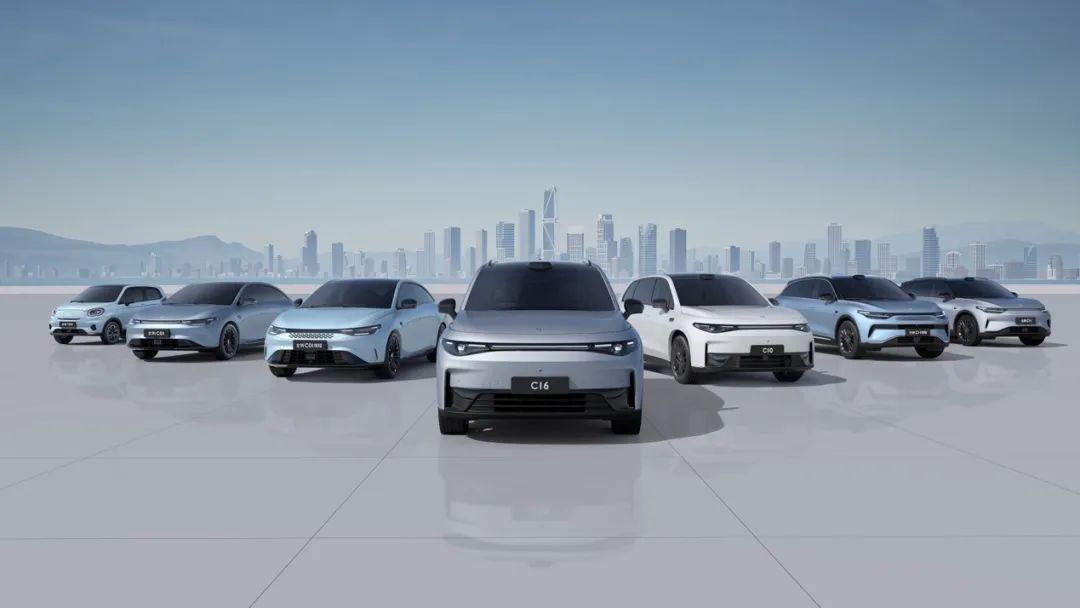Where Did the Money Go? When Will the Money-Burning Game of New Energy Vehicle Companies End?
![]() 07/04 2025
07/04 2025
![]() 731
731

TEAM
Typesetting: Chen Yujie
Images: From the internet, delete upon infringement
Produced by Qiancheng Digital Intelligence (an intelligent performance marketing agency)
When the spotlight shines on new energy, are automakers standing in the center of the stage the most profitable?
Judging from the profitability of various automakers, the answer seems to be no.
Data from 2024 reveals that among passenger vehicle listed companies achieving single-vehicle profitability, only NIO surpassed 10,000 yuan, with BYD at 9,400 yuan, Changan at 2,700 yuan, and GAC Group at 400 yuan. Most others are incurring losses. The combined net profit of China's top ten automakers amounts to only 40% of that of Toyota alone.
Domestic new energy vehicle production and sales are accelerating, yet automakers are not making money. So, where did the money go?
The Flow and Evaporation of Profits
The business world harbors an age-old truth: When people flock to dig for gold, only a few ever manage to find it, while suppliers selling water and shovels on the roadside are more likely to profit, as this is a more stable demand.
This is true for the rise of every industry: The supply chain is interlinked, and those links hidden behind the scenes may be quietly making a fortune, while those in the spotlight may already be deeply in debt. This is particularly evident in the automotive industry, which boasts a long supply chain.
The current profitability dilemma faced by automakers appears to be a contradiction between high investment and low prices, but in reality, it is an imbalance in the cost structure, indicative of a restructuring of power in the new energy vehicle supply chain.
In 2024, the average price of new energy vehicles fell by 18,000 yuan per vehicle (a decrease of 9.2%), but battery costs declined by only 5%-8% during the same period, resulting in a significant compression of single-vehicle profits. The reason batteries can maintain their prices is that power batteries, accounting for more than 40% of the cost of an entire vehicle, occupy the "heart" position in the new energy vehicle supply chain.
Contemporary Amperex Technology Co. Limited (CATL), known as the "King of Batteries," has achieved a dual monopoly in terms of technology and scale, with a gross profit margin exceeding 20% in the past two years, while automakers' gross profit margins have hovered around 5%, a stark contrast. GAC Group has even complained about "working for CATL," but due to the failure of self-research and development of batteries, it was eventually forced to return to procurement.
Automakers have even less say in the technologically bottlenecked field of chips. The overseas giant Infineon exercises pricing hegemony with a gross profit margin exceeding 38%. Consequently, domestic automakers are stepping up their efforts to overcome chip technology, but the high R&D funds in turn deepen their profitability dilemma.
Taking KunlunX as an example, the development cost reached 2.16 billion yuan. For the 5nm ideal ADAS, General Cruise, and NIO Shenji NX9031, the development cost amounted to 3.928 billion yuan. XPeng's self-developed algorithm also led to its R&D expenditures reaching 1.98 billion yuan in the first quarter of this year, an increase of 40.2% year-on-year. Most traditional automakers that entered the market later have not had time to conduct self-research and can only support their search for cooperation with top suppliers by diluting the profits of fuel vehicles.
However, neither continuous money-burning nor sacrificing profits is a sustainable solution. Since the beginning of this year, despite the continuous emergence of high-end models, the selling prices of new energy vehicles have continued to decline. In March 2024, the average price of new energy vehicle purchases was 172,300 yuan, while by March of this year, this figure had dropped to 161,000 yuan.
With profits being infinitely diluted and prices failing to rise, coupled with the two major "gold-swallowing beasts" of batteries and chips, if automakers cannot adjust their cost structure as soon as possible, they will only form an increasingly large "profit black hole." But the root of the problem is not that suppliers such as batteries and chips are taking away part of the automakers' profits. Because some profits never existed in the first place, and some profits were simply evaporated.
Looking back at history, under the wave of new energy, the profit landscape of the automotive industry is like a "moving feast," with the sovereignty of profits roughly undergoing three transfers in just five years: The first stage (2020-2022) was the initial rise of new energy, where resources reigned supreme, and the upstream sector enjoyed a "feast"; the second stage (2023-2024) saw overcapacity in the upstream sector, with lithium mine prices plummeting, and midstream manufacturers began to make a comeback with technological barriers.
Now we have entered the third stage (starting from 2025), and after a long period of "operating at a loss to gain popularity," whole vehicle enterprises have begun to strive for survival. At the same time, the difficult situation of OEMs is also reflected in their suppliers, who are part of a "community with a shared future." Affected by the price war, even CATL's revenue is declining. Data shows that the global auto parts industry is entering a stagnation period, with sales of 60% of parts suppliers declining year-on-year in 2024.
This means that if the water downstream cannot direct value to the market and turn it into "flowing water," then the midstream and upstream sectors of the automotive industry will become "bad water" due to clogging. At that time, the issue will not be who is taking away the profits, but rather that the profits will be "evaporated" outright.
Currently, a large backlog of inventory is seriously eroding automakers' cash flow. Data shows that the inventory of new energy vehicles surged to 850,000 units in the first four months of 2025, which would still take 2-3 months to digest even if production were halted completely. Under such circumstances, dealers clear inventory by disguising new cars as "zero-kilometer quasi-used cars" and selling them at a substantial discount, turning already meager profits into negatives.
In response, regulatory authorities have struck out in succession, from 60-day payment terms to banning "high-interest, high-rebate" automotive finance models in multiple regions, urging China's new energy vehicle industry to transition from the "adolescent" to the "fruitful" stage.
Why Is It Difficult to Make Money in New Energy?
Amid the changes in the new energy supply chain, automakers' "difficulty in making money" mainly stems from their "confusion" about the new situation.
The traditional automotive supply chain can be roughly divided into three links: OEMs, Tier 1 suppliers, and Tier 2 suppliers. Specifically, OEMs are the designers and final integrators of complete vehicles, defining vehicle requirements and managing Tier 1 suppliers; Tier 1 suppliers are subsystem integrators and technical solution providers, designing key subsystems according to the needs of OEMs, procuring Tier 2 components, and integrating them; Tier 2 suppliers are key component manufacturers, producing individual components according to Tier 1's technical drawings and generally do not interact with OEMs.
Both Tier 1 and Tier 2 can be considered manufacturers, with the essential difference being that the former has the "right to define the system" and possesses its own set of technical standards, while the latter can only "produce on demand." However, the arrival of new energy has given Tier 2 more "irreplaceability in manufacturing," allowing technologically advanced Tier 2 suppliers to achieve a certain degree of premium pricing or even evolve into Tier 1 suppliers. CATL's battery pack technology and Huawei's DriveONE electric drive are two typical examples.
In summary, the traditional supply chain is a hierarchical pyramid structure, with Tier 1 suppliers acting as "setters" to package Tier 2 components for OEMs while holding the core technology of subsystems, with little involvement from OEMs. For example, in the fuel era, Bosch's ESP system monopolized 80% of the global market through a solution integrating hundreds of components, but the domain controller of new energy vehicles is dismantling this integration model.

The disintegration of the traditional Tier 1 integration model means the "rise" of Tier 2 suppliers and the return of OEMs' technical discourse power. CATL, which has moved from Tier 2 to Tier 1, belongs to the former, while the rise of early new forces in automaking belongs to the latter.
For example, XPeng's XNGP software algorithm is self-developed by the OEM, while Lixiang directly co-develops with Hesai (Tier 2), which makes lidar. This direct procurement model bypassing the middle layer breaks the original hierarchical structure of the automotive supply chain and helps the new forces, who initially started from scratch, achieve penetrative cost management.
However, as competition intensifies, the dividend space left by the disintegration of the traditional Tier 1 integration model is being swallowed up by the technological homogenization of Tier 2 and the price war among automakers. The industry urgently needs to explore a more sustainable profit path under the new supply chain situation.

But in any industry, regardless of how the supply chain changes, achieving cost reduction and efficiency enhancement requires strong supply chain management capabilities. This is true for BYD, for Zero Run, and also for Lixiang, which actively collaborates with suppliers on R&D.
BYD and Zero Run are automakers with the highest proportion of self-developed core components and are currently the two most profitable domestic new energy players. In 2023, the proportion of BYD's self-developed components reached 75%, while Zero Run promoted a proportion of 65% this year.
BYD not only self-develops the three electric systems but also achieves a 33% cost reduction through self-developed SCI chips. Zero Run is a representative of "quietly making a fortune." Although it focuses on the unnoticed mid-to-low-end market, it has quietly made a comeback with its full-stack self-research strategy, delivering nearly 300,000 new vehicles in 2024 and achieving profitability within three years. This year, it has "led" new forces for four consecutive months.
Lixiang and its suppliers also have a clear mutually beneficial relationship. Nowadays, CATL, Horizon Robotics, and Hesai, which were the first to cooperate with Lixiang, are already leading enterprises in their respective fields.
Because the relationship between OEMs and parts suppliers in the new energy era is no longer simply that of "Party A and Party B" but rather a "community with a shared future" of deep collaboration and mutual dependence, and most insiders have not yet adapted to their "new roles."
How Can Automakers Break the "Curse" of Losses?
From the above analysis, it seems more difficult for automakers to make money amid changes in the new energy vehicle supply chain, but in reality, it is not. They just need to find the right positioning, re-recognize themselves, and transform themselves.
First, automakers need to recognize that they are no longer the sole protagonist in the automotive industry chain.
Amid changes in the new energy vehicle supply chain, the profit space opened up by the disintegration of Tier 1 should not be a battlefield for OEMs and Tier 2 to compete for technological definition rights but rather a new racetrack for OEMs and Tier 2 to advance hand in hand.
In the mesh-like new energy vehicle supply chain, vertical integration and direct procurement from Tier 2 are becoming rigid demands for survival. Players like Horizon Robotics and Huawei, who can be considered Tier 0.5 suppliers, are opening up new landscapes for the automotive supply chain. In the future, an ecological community with deep integration between OEMs and suppliers will be the ultimate form of the leap in the new energy vehicle industry.
Second, automakers need to reposition themselves, not staying in the role of assemblers from the fuel vehicle era but actively transforming into technology companies.
This year's battle for intelligence is not only an active "transformation" by automakers in response to the upgrading of the new energy industry but also an inevitable means for them to seek profitability. In the "hidden corner," Huawei has quietly integrated multiple links in the new energy vehicle industry chain, including chips, lidar, and software services, through its full-stack solutions, achieving profitability upon entering the market as a technology company. Because being a technology company is precisely the goal that automakers need to achieve in the new energy era.
Similarly, Xiaomi, which is also a technology company, although not prominent in self-research and development capabilities, has greatly assisted its "automaking myth" with its "investment banking-style automaking" logic. Lei Jun began investing in NIO and XPeng in 2014 and has since invested in nearly 10 companies in the electric vehicle industry chain. As of now, Xiaomi has cumulatively invested in nearly 100 related enterprises upstream and downstream of the smart car industry chain, basically achieving a full-chain layout for intelligent driving.
It can be seen that traditional automakers aiming to become technology companies must either possess superior technical self-research and development capabilities or forward-looking investment capabilities, and both approaches can help them aggregate the supply chain, enabling relevant suppliers to quickly, efficiently, and accurately serve their needs.
In this regard, traditional automakers have become increasingly aware of the importance of intelligence in the competitive landscape. Recently, the industry has continuously been buzzing with news of automakers investing, integrating, and establishing technology companies. For instance, Hongqi has collaborated with DJI, Geely has launched Qianli Intelligent Driving, Dongfeng has established Dongfeng Yipai Automotive Technology, Chery's "Yao Guang 2025" strategy is solely focused on technological advancements, and Changan's "Third Entrepreneurship" clearly outlines the goal of transforming into "Technological Changan."
However, the transition from manufacturing to technology is not a feat that can be achieved overnight. If automakers aim to swiftly escape the losses they face, they must also seek out avenues to generate "quick wins."
One approach is to revamp the operating model by exploring "asset-light" operations to alleviate the current heavy burden of R&D costs.
The traditional 4S store model is both costly and slow to scale, whereas the partnership system effectively addresses these issues. By partnering, automakers can significantly reduce the initial investment and operational burden of self-built networks, while also securing a relatively stable cash flow through franchise fees, management fees, and other revenue streams. Most importantly, by leveraging local social resources, automakers can enhance market development efficiency and partially shift the costs and risks associated with market coverage.
It is reported that Zeekr intends to introduce a partnership model in lower-tier markets, such as the fourth and fifth tiers. In this model, partners are only responsible for the cost of store construction, while the manufacturer retains control over heavy asset links like vehicle inventory and brand operations. This can effectively mitigate the problem of dealer inventory backlog but may also risk further reducing dealer discourse power.
Another strategy is to explore profit points in the mobility market by shifting from selling cars to renting them, aligning with the current economic climate where consumers are tightening their purse strings.
The recent surge in rental prices for Xiaomi's YU7 has once again underscored the profit potential of the car rental market and the genuine needs of the public amidst economic downturns. In this regard, NIO launched vehicle leasing services in Germany, the Netherlands, and two other countries as early as 2022, capitalizing on local tax incentives for corporate vehicle use. Meanwhile, Lingke's "subscription" (rental) car membership surpassed 150,000 in 2022.
While China accounts for up to 42% of the global electric vehicle rental market, which exceeded 80 billion dollars in 2025 and is the largest market globally, the proportion of electric vehicles on mainstream car rental platforms is still significantly lower than that of fuel vehicles. This is mainly due to the currently low resale value of electric vehicles. However, Tesla, which boasts a higher resale value, has embarked on the Robot Taxi, an unmanned car rental service.
Speaking of Tesla, despite its recent profit decline, the company continues to make numerous seemingly "far-fetched" new attempts, leaving other automakers in awe and admiration. In the future of the automotive industry, where intelligence is paramount, no one can arbitrarily conclude that "this path is impassable."
Kanche Shuo
The booming rise of the new energy industry does not guarantee that all players will share in the benefits. However, the extensive automotive industry chain presents a dynamic and ever-changing landscape of profit patterns. This underscores that every player has the opportunity to turn the tide but also faces the risk of losing momentum.
The old saying "Thirty years to the east, thirty years to the west" has been drastically accelerated in the automotive industry. Nowadays, the industry undergoes significant shifts almost every two years. To navigate this landscape, collaboration is imperative. For both automakers and the general public, only the symbiotic prosperity of the supply chain can facilitate a genuine industrial upgrade.
With the rise of new energy, our aspiration is not merely to see a few world-renowned brands emerge but to ensure that more people can reap the benefits of this "full meal" of new energy.







